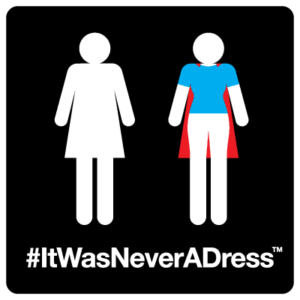Unconscious Bias
Lecture at the university, Department of Medicine. The professor asks the students:
“Who among you has been mistakenly addressed as a nurse while working at the hospital?”
Hands go up.
All female students raise their hands.
One male student raises his hand. Skin color: Dark.
Not a single white male student raises his hand.
The professor nods: “This is a typical example of unconscious bias that affects us all—our patients and ourselves. In a hospital, it is spontaneously assumed that a female employee is a nurse, and a man is assumed to be a doctor.”
Today we’ll learn more about biases and psychological effects that significantly influence us in our work and as leaders, both positively and negatively.
Today, we will examine unconscious bias from the perspective of employee evaluation and in the context of personnel selection, job interviews, and recruiting processes.
Definition of Unconscious Bias (implicit prejudices):
Unconscious bias or “implicit prejudices” describe all the unconscious distortions of our perception that influence our judgment and actions. The term unconscious bias is an umbrella term that includes more than 100 implicit biases, significantly impacting leadership, decision-making, recruiting, and diversity & inclusion initiatives.
Positive Effects of Unconscious Bias:
Biases are not necessarily always discriminatory. Quite the contrary! But that also makes them so tricky.
When we form an impression of a person, their physical appearance plays a huge role.
Unconscious bias operates in the first second when we draw conclusions from someone’s appearance.
A tall, muscular, healthy man appears more decisive, convincing, assertive, and successful.

He is trusted with more challenging tasks, and if he masters these, our conviction that our “evaluation” based on his appearance was correct is reinforced.
The Pygmalion effect, which became known through the research of Robert Rosenthal and Lenore F. Jacobsen, also influences us unconsciously but with a potentially very positive outcome:
In the Rosenthal experiment, elementary school teachers were told that a test had shown that some of their schoolchildren were about to experience a performance boost, although the children were randomly selected.
At the end of the experiment, some of these children had indeed improved significantly compared to other children, which was unexpected.
They did not improve not because they had unique talents or abilities, but because the teachers treated them differently and encouraged them.
The teachers were not aware of this. In their opinion, they had not treated the children better, but the children were so good and participated more actively in class.

This subconsciously encouraging Pygmalion effect naturally has disadvantages because other children were not as intensively supported.
What I want to point out is that some unconscious effects can indeed be helpful and beneficial.
The fact is:
Unconscious bias can lead to us giving people a chance or promoting those who, upon objective consideration, might not be qualified enough – and they seize this opportunity.
Unfortunately, unconscious bias often has negative and critical impacts.
Using the previous example again:
If we believe that the tall, muscular, healthy man is also assertive and successful, then:
- We are more likely to trust him to lead a team out of a difficult situation in a recruiting interview.
- We will assume that we need to pay him a higher salary.
- We will see his demands for more influence, salary, title, etc., as proof that he is successful because he would not demand them otherwise.
- We will not question him about his education or basic qualifications.
And so, a man (!) with the right demeanor can achieve a great deal even without substantive knowledge.
Imposters exploit the unconscious biases of others to perfection, as we can entertainingly see in “Catch Me If You Can” (a film based on true events).

In contrast to the before-mentioned man, a small, petite, quiet woman appears insecure, fearful, less assertive, and not confident.
Even if she brims with self-confidence and could assert herself against 20 Fortune 500 executives, her immediately perceptible criteria of “appearance” and “quiet demeanor” would likely lead to assumptions of weakness or lack of qualifications.
“Women are seen as incompetent until proven otherwise. Men are seen as competent until proven otherwise,” says Prof. Joan Roughgarden, Stanford University
Women Discriminating Against Women
We might assume that the disadvantage faced by women is primarily due to unconscious bias from men.
But how much are women actually affected by it?
Unfortunately, more than we might think.
Author Catherine Nichols, who has published over 80 books, described the following experience in an interview with the BBC:
As usual, she sent some chapters of her new book to 50 literary agents, most of whom were women. Only two of them responded positively.
That’s a success rate of 4%.
She found this poor response surprising since she had already shared the book with other authors, who were full of praise.
So, she approached 50 other literary agents and sent them the same chapters. However, this time she used a male name. She received 17 positive responses.
A success rate of 34%.
Compared to the 4% when she submitted the manuscript as a female author, the difference was more than significant.
Furthermore, as a male author, she received constructive feedback on how she could improve the manuscript. A response she had never experienced in her career as a female author.
“I was shocked when it became clear how much difference the gender of the author made.”
These results are not only found among female literary agents.
Other studies show that women have unconscious biases when evaluating other women, and these biases are disadvantageous.
Unconscious Bias in Medical Staff
That gender is not the only factor is proven by a study involving doctors:
American doctors prescribe less pain medication to Black and Latino Americans than to white patients because of unconscious bias. As if Black Americans and Latinos have a different pain perception than whites…
Unequal Treatment of Female and Male Students by University Professors

A final example that unconscious bias is definitely not a matter of educational level comes from the following elaborate study:
→ 6,500 professors from top American universities
→ Across 89 departments and from
→ 259 institutions
These professors received emails requesting a brief conversation about a doctoral position.
All emails were absolutely identical — except for the sender’s name.
In an elaborate process, fictive sender names were chosen that suggested the sender’s gender and ethnic background, such as Joe Smith, Emilia Rodriguez, or Yu Jin Ho.
One might assume that the professors would treat all inquiries equally. After all, they are highly educated and should focus on the content, not the interpretation of names of people they do not know.
The opposite was the case.
The following table shows how strongly unconscious bias, likely in combination with existing conscious prejudices, influenced individual professors.

The percentages indicate how much of each group’s inquiries were responded to. The columns represent white, Caucasian men and “all others” (please do not misunderstand), generally women and men of other ethnic backgrounds, such as Latinos, Africans, Chinese.
Summarized in one sentence, the result is as follows:
White men have a massive advantage over all other ethnic groups – with the exception of the arts sector, where white men had significantly worse chances.
And the last statement could immediately trigger the following unconscious bias in us…
“Yes, surely most professors in the business sector are white men, and in arts faculties, women predominate – and everyone prefers their own group.”
That could be the case.
But it might also not be the case.
However, if you even slightly felt the urge to explain this study result with similar logic, then you have experienced unconscious bias in action.
👉Here you can find the study on professors’ unconscious bias.
Unconscious Bias Masterpiece: When They See Us
When unconscious bias and deep-seated, genuine prejudices come together and are then combined with public pressure, a ruthless combination of stubbornness and a dangerous distortion of facts is created.
Because one wants what is “in their head” to be true.
If you want to see this combination in a real case that destroyed the lives of innocent black boys, then watch the series “When They See Us” on Netflix.
I want to warn you: it is almost unbearable to watch how the police and the judiciary, blinded by rage, acted in reality.
Here is the trailer: Link
It was extremely difficult for me to watch the series. Because it is not fiction, but a reflection of reality.
Unconscious Bias in Leadership and Recruiting
So, what do we do now with our insights into our inability to evaluate people objectively?
In Canada, the UK, and the USA, for instance, job applications are supposed to include no photos to prevent candidates from being advantaged or disadvantaged solely based on their appearance.
In Germany and many other countries, a photo is not officially required, but an application without a photo might be negatively judged. The unconscious bias could suggest, “Well, if this applicant had nothing to hide, she would have included a photo. She must want to hide something. That’s not good.”
The arguments from companies that a photo on the application letter helps to form “a better impression of the applicant” are correct. But what does appearance have to do with how well an administrative assistant can manage accounting, a team leader can lead a team, or a scientist can optimally fill a research position?
Have you perhaps thought, “Well, a good-looking and convincing team leader will surely lead her team better and influence the employees more easily”? Then unconscious bias was at work again.
Do you see how devilish these prejudices, stereotypes, and automatic thought processes are?
Methods Against Unconscious Bias
That’s why I don’t believe that we can eliminate these prejudices quickly through a few simple exercises and methods.
We must not forget: Some of the underlying mechanisms of unconscious bias that make our lives difficult today in recruiting and leadership, because they disadvantage people, go back thousands of years.

Naturally, it is absolutely correct to have recruiting decisions made by a group of people who not only exhibit high diversity but also have extensive knowledge about unconscious biases.
It is also appropriate to employ selection methods for leadership roles that aim to prevent, or at least mitigate, prejudgments rooted in biases and unconscious bias.
Elements of Unconscious Bias
There isn’t just ONE unconscious bias, but rather a large number of unconscious prejudices or automatisms in our brain that constitute unconscious bias.
- The HALO Effect, in which one attribute overshadows all others
- Confirmation Bias/Error, where we selectively perceive only the information that confirms our pre-existing opinions
- Groupthink, which makes it extremely difficult for us to express our opinion when a group is convinced of a different one.
- The Pygmalion Effect, which we have already mentioned (the fostering of supposedly particularly gifted children)
- Priming is also clearly part of unconscious bias regarding diversity and inclusion.
Conclusion on Unconscious Bias in Leadership
In my online training on conducting job interviews and becoming a magnet for top talent, executives and HR staff train their skills to perform better job interviews and make better hiring decisions. The training will not completely eliminate unconscious bias in your recruiting conversations. But you will take an important step in the right direction and at least act and decide with less bias.
And every step in the right direction is important. Because it decides the fate of people!
For example, thousands of job interviews take place every day without a reasonable agenda. Clear decision criteria are often missing.
Because the executive or recruiter might say, “Yes, I don’t need templates and checklists. I do it based on my vast experience, instinct, and gut feeling.”
Well, great… Then unconscious bias has the perfect foundation from which to work.
We might be discouraged to realize:
“Damn, this unconscious bias is really annoying. It makes recruiting and leadership incredibly challenging. And there isn’t even a method to reliably and safely get out of this. Well, I don’t know what we should do now. Let’s just continue as before.”
Because that is precisely the solution we usually choose for insoluble problems.
We continue as before because we see no better option.
Don’t believe me? Then read the examples of selection processes in management in “Thinking, Fast and Slow,” and you will find the evidence.
What we should definitely do immediately is to completely review the entire process from the identification of talents, through the promotion of employees, to the promotion and evaluation of promoted employees for weaknesses that foster unconscious bias.
We should actually diversify all committees and ensure that personnel decisions are reviewed retrospectively to identify what led to good or poor decisions—to avoid repeating these mistakes for the next 20 years.
